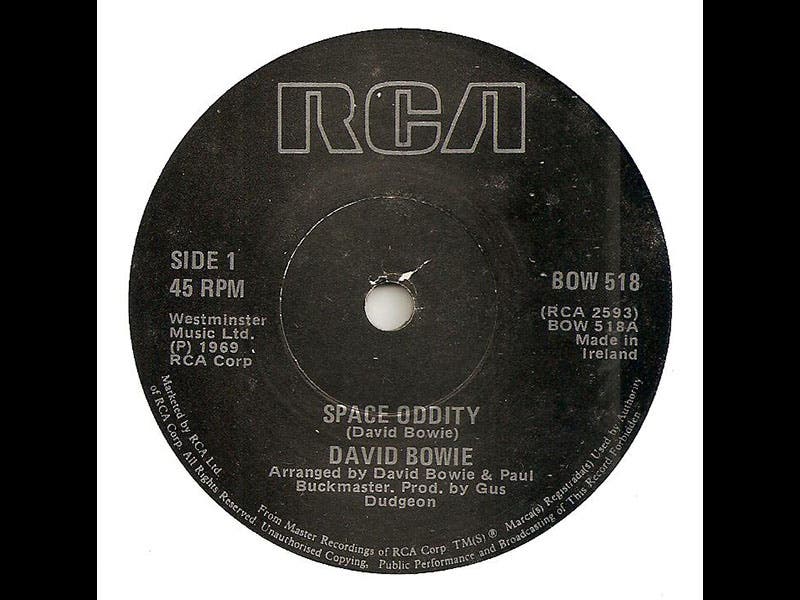Scientist of the Day - David Bowie
David Bowie, a pop music pioneer and actor, was born Jan. 8, 1947. On July 11, 1969, Bowie released a song single called "Space Oddity." The Apollo 11 lunar mission was just 5 days away, and there seems no doubt that the timing of the release of a song about an astronaut sent into space was intended to capitalize on the space fervor that was rampant in those days. The title of the song was a play on 2001: A Space Odyssey, the film that had appeared just a year earlier. "Space Oddity" is sometimes referred to as "Ground Control to Major Tom," which is the first line of the lyric. If you don't know the tune, or wish to refresh your sonic memory, we offer you your choice of the original video, which is a little weird (Bowie was pretty weird back then), or an audio-only version. “Space Oddity” was not the major hit that Bowie hoped for in the U.S. (although it did quite well in England), but it has steadily grown in popularity over the past fifty years and is regularly heard, both in concert and on the air. After Bowie sadly died just a year ago, the song had a resurgence on the airwaves.
One of the more interesting covers of “Space Oddity” came in May of 2013, when Canadian astronaut Chris Hadfield recorded a video of Bowie’s song on the International Space Station, with himself singing and playing (or at least holding) a guitar (an airless guitar?). It was supposedly the first music video ever shot in space, and when released on YouTube, it generated tens of millions of hits, and has continued to do so. Hadfield is no David Bowie, but he is pretty good, and you might find the video in this version more agreeable than the original. It is a good way to experience what it is like, “sitting in a tin can far above the world.”
Bowie had several other connections to the world of science. He played a convincing alien in the sci-fi film, The Man who Fell to Earth (1976; second image), which many hail as an unsung classic and which won Bowie a Saturn award. We prefer his role in The Prestige (2006), where he plays the genius inventor, Nikola Tesla (third image), who in the film agrees to devise a mass transference device for the protagonist magician, played by Hugh Jackman. You can find a three-minute clip combining two of Bowie’s scenes on YouTube. The casting of the maverick Bowie as the renegade Tesla was inspired.
Rest in peace, Major Tom.
Dr. William B. Ashworth, Jr., Consultant for the History of Science, Linda Hall Library and Associate Professor, Department of History, University of Missouri-Kansas City. Comments or corrections are welcome; please direct to ashworthw@umkc.edu.









